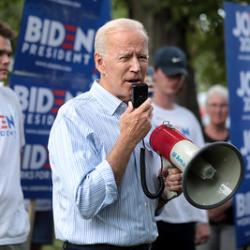I think it’s time to debunk some of the more pervasive myths about the current S-CHIP bill, namely that it provides health care to children who do not need it, that it simply replaces private with public insurance, that it goes to adults, that it authorizes an expansion in the program to families making over $83,000, and that the Bush administration supports keeping the current S-CHIP program in place. The proposed bipartisan bill costs $35 billion, small change in the budget. Remember that the program is designed to reach children too rich for Medicaid, but too poor to attain private insurance– a substantial gap. Here are the pertinent facts about the program, and the recently-vetoed expansion:
- The bill stays within the boundaries of the current legislation, limiting the program to children with families with incomes up to twice the federal poverty level. States that want to increase eligibility beyond this threshold must apply for a waiver, as is the case today. The $83,000 figure that gets quoted a lot comes from a request for a waiver by New York state– a request that was denied.
- This bill has bipartisan support, with Republicans like Grassley and Hatch touting the fact that the program gives state governments flexibility when it comes to allocating spending (in other words, it respects subsidiarity). Remember, the program was negotiated 10 years ago between Bill Clinton and Newt Gingrich, with the latter dubbing it “a step forward for conservative principles”.
- Peter Orczag of the Congressional Budget Office notes that the bill envisages 5.8 million additional children receiving health insurance by 2012. Of that number, 3.8 million are uninsured today.
- Of the potential new enrollees, 84 percent are already eligible for the program, but the funds are currently insufficient to cover them. In other words, they would come from families with incomes below the current state’s eligibility limits. Only 600,000 would gain eligibility as states widened their criteria.
- The bill does not foresee a major expansion in government insurance. The Kaiser Foundation notes that three-quarters of the 6.6 million children who currently benefit from S-CHIP do so through private insurance.
- More than 90 percent of the children who benefit currently are from families with incomes less than twice the federal poverty level. The vast majority of the 3.8 million extra children who would benefit would also come from similar families.
- S-CHIP is not free. States can charge premiums and co-payments for all but the poorest beneficiaries.
- Some states covered adults in the past, because they received the requisite waivers, and the Bush administration actively encouraged states to use S-CHIP money on adults. In any event, the vetoed bill included provisions to reduce the funds available for adults.
- Bush’s proposed $5 billion expansion over three years would actually lead to a cut in the number of children covered by the program, as it is not linked to inflation.
- Some have complained that the bill seeks to fund the increase through an increase in tobacco taxes, forgetting that this is a restoration of the pay-as-you go system of fiscal prudence that did not survive the ascent of the Bush administration. It is also puzzling to complain about the regressive nature of these taxes when the Bush tax cuts turned out to be some of the most regressive in history.
- The people who complain about a modest $35 billion bill leading to a massive increase in entitlement spending are the same people who presided over the most substantial increase in entitlements since the Johnson administration (for for the record, despite what the pundits seem to think, the real issue with the sustainability of entitlement spending is with Medicare, not Social Security).
- While vetoing $35 billion for children’s health insurance, the administration seeks $190 billion for war and occupation in Iraq.












